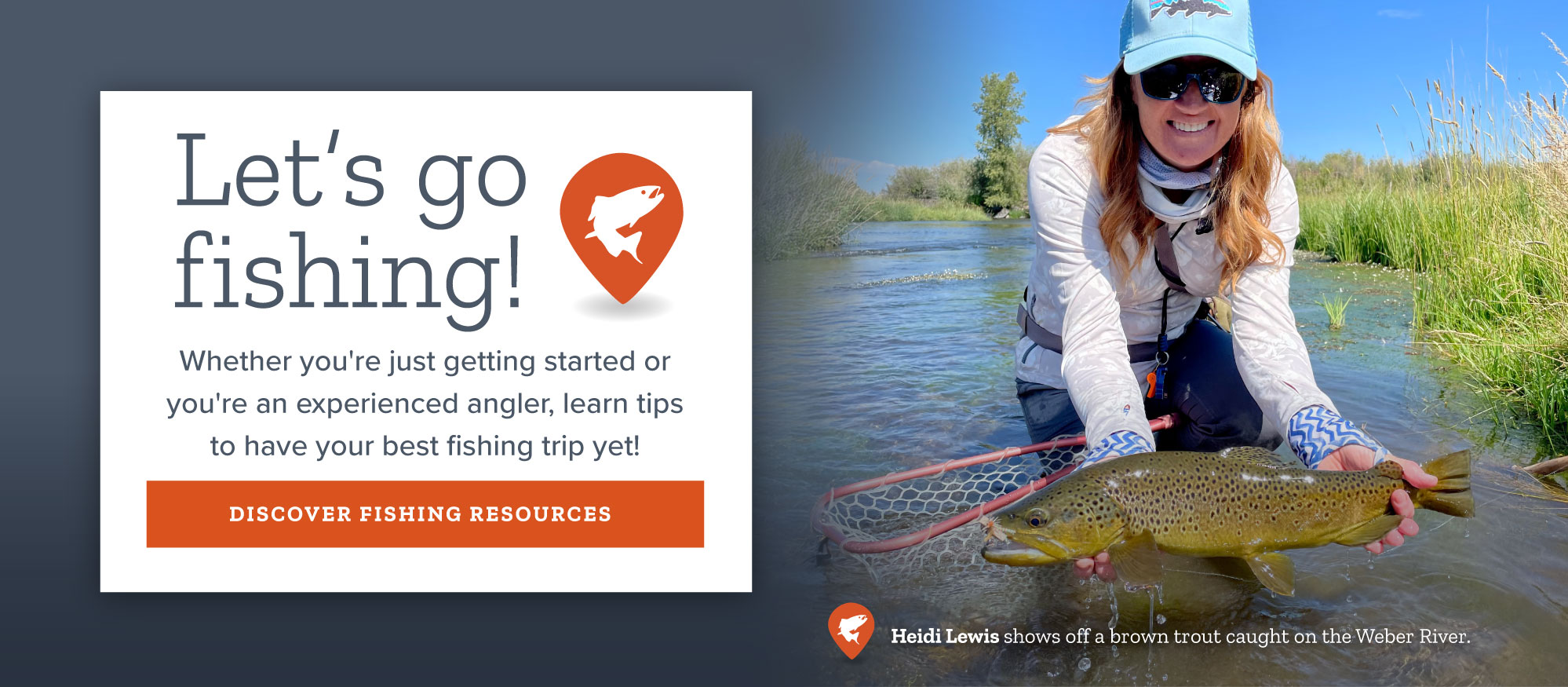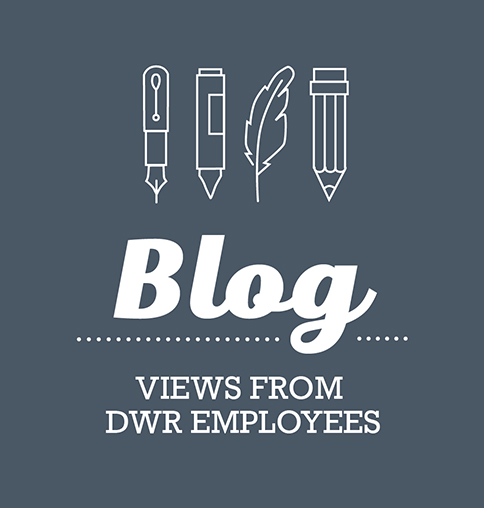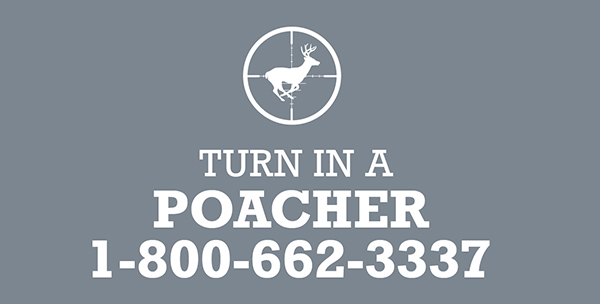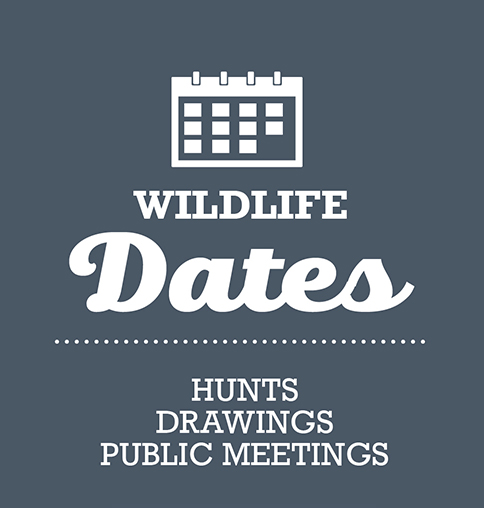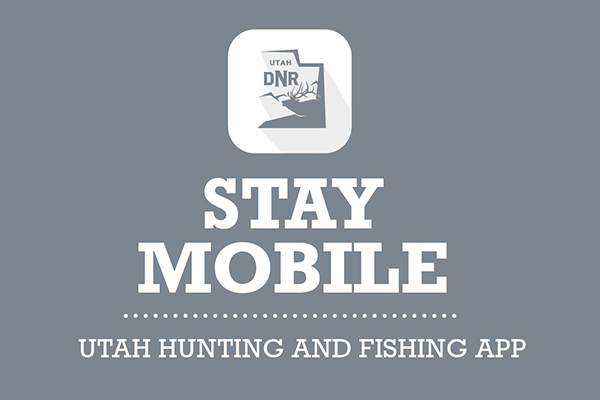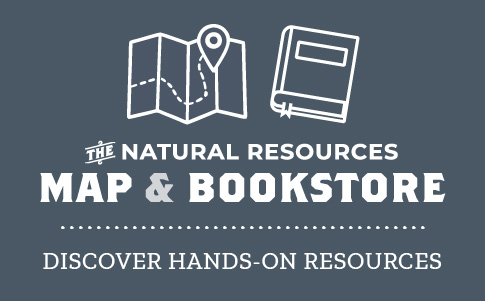Administrative rule R657-38
Dedicated Hunter Program
Scroll to bottom of page to view a menu of all administrative rules
KEY: wildlife, hunting, recreation, wildlife conservation
Date of Last Change: August 21, 2024
Notice of Continuation: September 8, 2020
Authorizing, and Implemented or Interpreted Law: 23A-2-305
R657-38-1. Purpose and Authority.
(1) Under the authority of Section 23A-2-305, this rule provides the standards and requirements for qualified deer hunters to participate in the Dedicated Hunter Program by obtaining a certificate of registration.
(2) The Dedicated Hunter Program is a program that:
(a) provides expanded hunting opportunities;
(b) requires participation in wildlife conservation projects; and
(c) provides educational training in hunter ethics and wildlife management principles.
R657-38-2. Definitions.
(1) Terms used in this rule are defined in Section 23A-1-101.
(2) In addition:
(a) "Dedicated Hunter Permit" means a general buck deer permit issued to a participant in the Dedicated Hunter Program, which authorizes the participant to hunt deer during the general archery, general muzzleloader and general any weapon open seasons in the hunt area specified on the permit.
(b) "Division" means the Utah Division of Wildlife Resources.
(c) "Enrollment" means the three year term which the certificate of registration is valid.
(d) "Hunt area" means an area prescribed by the Wildlife Board where general archery, general muzzleloader and general any legal weapon buck deer hunting is open to permit holders for taking deer.
(e) "Participant" means a person who has remitted the appropriate fee and has been issued a Dedicated Hunter certificate of registration.
(f) "Program" means the Dedicated Hunter Program.
(g) "Program harvest" means using a Dedicated Hunter permit to tag a harvested deer or failing to submit a harvest report as required, while enrolled in the program.
(h) "Wildlife conservation project" means any project that provides wildlife habitat protection or enhancement, improves public hunting or fishing access, or directly benefits wildlife or the Division's current needs and is pre-authorized by the Division.
R657-38-3. Dedicated Hunter Certificates of Registration.
(1)(a) To participate in the Dedicated Hunter Program, a person must apply for, be issued, and sign a certificate of registration as prescribed by the Division.
(b) Certificates of registration for a designated hunt area are issued by the Division through a drawing as prescribed in the guidebook of the Wildlife Board for taking big game and Rule R657-62.
(c) Certificates of registration are valid for three consecutive years, except as provided by Sections R657-38-10 and R657-38-13, beginning on the date the big game drawing results are released and ending on the last day of the general season hunt for the third year of enrollment.
(d) The quantity of certificates of registrations for the Dedicated Hunter Program available in the big game drawing is limited to:
(i) 15% of the total annual general season buck deer quota for each respective hunt area, inclusive of those certificates of registration that are within active enrollments; or
(ii) one resident and one nonresident certificate of registration if the 15% total on that hunt area is met or exceeded.
(e) Certificates of registration remaining unissued from the Dedicated Hunter portion of the big game drawing shall be redistributed as general single-season permits for their respective hunt areas in the general buck deer drawing.
(2) The Division may deny issuance of a certificate of registration for the Dedicated Hunter Program for any of the reasons identified as a basis for suspension in Subsection 23A-4-1106 (7) and Section R657-38-15.
(3)(a) A certificate of registration for the Dedicated Hunter Program conditionally authorizes the participant to obtain a Dedicated Hunter permit, which may be used to hunt deer within the area listed on the permit, during the general archery, general muzzleloader and general any legal weapon buck deer seasons according to the dates and boundaries established by the Wildlife Board.
(b) When available, the certificate of registration may also authorize the Dedicated Hunter permit to include the general deer archery extended area during the extended season dates.
(c) The person must use the appropriate weapon type specified by each season and boundary.
(4) The participant may not change to a different hunt area during the enrollment.
(5)(a) The division may make changes including, season opportunity, season length, boundaries, allowable weapon types, or other special restrictions to all or any portion of a hunt area or management unit, when in the interest of the wildlife resource or as necessary for the division to accomplish its management objectives, and may not guarantee each hunt area remains unchanged during the Dedicated Hunter's enrollment period.
(b) Dedicated Hunters shall be subject to any changes subsequently made to this or other rules pertaining to the hunt area they have drawn.
R657-38-4. Applications for Certificates of Registration.
(1) Applications to obtain a Dedicated Hunter certificate of registration are made pursuant to Section R657-62-16.
(2) To apply for a Dedicated Hunter certificate of registration, applicants must:
(a) have a valid Utah hunting or combination license;
(b) meet all age, hunter education, and license requirements in Sections 23A-4-1001, 23A-4-703, 23A-4-706, 23A-4-707 and applicable rules, except that:
(i) A person 11 years of age may apply for and obtain a Dedicated Hunter certificate of registration if that person's twelfth birthday falls in the calendar year the certificate of registration is issued; and
(ii) a person may not hunt big game before their twelfth birthday; and
(c) be compliant with the restrictions in Subsection (2).
(3) A person under any wildlife suspension may not apply for a certificate of registration until their suspension period has ended.
R657-38-5. Dedicated Hunter Preference Point System.
Dedicated Hunter Preference points are issued pursuant to Section R657-62-10.
R657-38-6. Fees.
(1) Any person who is 17 years of age or younger on July 31 of the application year shall pay the youth participant fees.
(2) Any person who is 18 years of age or older on July 31 of the application year, or is a Lifetime License holder, shall pay the associated participant fees.
(3)(a) A participant who enters the program as a Utah resident and thereafter becomes a nonresident shall be changed to a nonresident status and may be issued nonresident permits for the rest of the enrollment period.
(i) No additional fee shall be applied to the nonresident certificate of registration or its respective permits following this residency change.
(4)(a) A participant who enters the program as a nonresident and thereafter becomes a Utah resident, shall be changed to a resident status and may be issued resident permits for the rest of the enrollment period.
(i) No refund will be issued for the difference of the resident certificate of registration fee or its respective permits following this residency change.
R657-38-7. Refunds.
(1) A refund for the Dedicated Hunter certificate of registration may not be issued, except as provided in Sections 23A-4-207 and 301 and R657-42.
(2) Any eligible refund of a certificate of registration fee may be issued pro rata, based on the number of years in which any portion of a hunt may have occurred during the enrollment period.
(3) Drawing application fees are nonrefundable.
(4) A refund shall not be issued under any circumstance if a participant's harvest record indicates two program harvests.
R657-38-8. Wildlife Conservation and Ethics Course Requirement.
(1) After being issued a Dedicated Hunter certificate of registration and prior to obtaining the first Dedicated Hunter permit of the program, a participant must complete a wildlife conservation and ethics course as prescribed by the Division.
(2) The wildlife conservation and ethics course is available through the Division's website.
(3) The Division shall keep a record of all participants who complete the wildlife conservation and ethics course as required by Utah law.
R657-38-9. Service Hour Requirement.
(1)(a) A participant must complete the minimum annual required service hours as a volunteer on Division-approved wildlife conservation projects to obtain a Dedicated Hunter permit.
(b) A participant must complete a minimum of 6 service hours before receiving a Dedicated Hunter permit in the first year of the program.
(c) A participant must complete a minimum total of 22 service hours before receiving a Dedicated Hunter permit in the second year of the program.
(d) A participant must complete a minimum total of 32 service hours before receiving a Dedicated Hunter permit in the third year of the program.
(e) If the participant has two program harvests, the full 32 hours must be completed before the expiration of the certificate of registration.
(f) If a participant having two program harvests fails to complete the required hours of service before expiration of the certificate of registration, the participant is ineligible to apply for or obtain any Utah hunting license or permit until the remaining service hours have been completed.
(g) After a certificate of registration has expired, incomplete service hours may be completed through Division approved projects or by payment at the established purchase rate.
(2) A participant who has not been issued any Dedicated Hunter permits during the enrollment may not be required to complete the service hour requirement.
(3)(a) Residents and nonresidents may complete service hour requirements through service, purchase, or a combination of the two options.
(b) Wildlife conservation projects may be provided by the Division, or any other individual or entity, but must be pre-approved by the Division.
(c) Goods or services donated to the Division by a participant may be, at the discretion of the Division, substituted for service hours based upon current market values or comparative state contract rates for the goods or services, and the approved service hour purchase rate.
(d) The Division shall publicize the dates, times, locations and description of approved wildlife conservation projects and activities on the Division's website.
(4)(a) Service hours performed before an enrollment may not be accepted as service credit.
(b) Service hours exceeding the minimum requirement may not be applicable beyond the enrollment period and may not be credited to any subsequent certificate of registration.
(5)(a) Participants are required to perform their own service hours.
(b) Service hours are not transferable to other participants or certificates of registration.
R657-38-10. Certificate of Registration Extension.
(1)(a) A participant who is a member of the United States Armed Forces or public safety organization that is mobilized or deployed on orders in the interest of national defense or declared state of emergency while enrolled in the program may request a one-year program extension if:
(i) the person is mobilized or deployed for a minimum period of three consecutive months; or
(ii) the participant is mobilized or deployed during the general buck deer season.
(b) The participant must provide evidence of the mobilization or deployment period and that the mobilization or deployment precluded the participant from using the Dedicated Hunter permit.
(c) An extension may not be granted if the participant hunted during the general deer season.
(d) If an extension is granted due to mobilization or deployment:
(i) the minimum annual program requirements shall be postponed into the subsequent year of the enrollment;
(ii) a permit will not be issued in the year the qualifying mobilization or deployment occurs.
(2)(a) A person who is enrolled in the program and obtains a limited entry buck deer permit through the Utah Big Game drawing or accepts a poaching reported reward limited entry buck deer permit, will receive a one-year extension to the Dedicated Hunter Program enrollment period.
(i) If the limited entry deer permit is surrendered during the enrollment, the extension will be retracted and the original three-year enrollment restored.
(ii) The minimum annual program requirements shall be postponed into the subsequent year of the enrollment.
R657-38-11. Allowable Harvest and Reporting Requirements.
(1)(a) A program participant may take a maximum of two general season deer within the enrollment period. Only one deer may be harvested in a single year.
(b) The harvest of an antlerless deer using a Dedicated Hunter permit, when permissible in the extended archery areas and seasons established in the big game guidebook, shall be considered a program harvest.
(2) Upon issuance of a Dedicated Hunter permit, the participant is credited with a program harvest.
(a) Two program harvests are allowed within an enrollment period.
(b) If program harvests accrue during the first year and second year of the enrollment, a permit may not be issued for the third year.
(c) To remove a program harvest, the participant must:
(i) not have harvested a deer with the Dedicated Hunter permit; and
(ii) must submit a harvest report before the annual deadline established by the division pursuant to Rule R657-5.
R657-38-12. Dedicated Hunter Permits.
(1)(a) Pursuant to Sections 23A-4-706 and 23A-4-707, a person must have a valid Utah hunting or combination license to apply for or obtain a big game permit.
(b) Except as provided in Subsection (c), a permit may not be issued if the participant does not have a valid hunting or combination license at the time of permit issuance.
(c) A valid hunting or combination license is not required to obtain a permit in the first year of the enrollment period, provided the participant possessed a valid license when applying for the Dedicated Hunter certificate of registration.
(2) The participant must have a valid Dedicated Hunter permit in possession while hunting.
(3) Upon completion of the minimum annual requirements, a Dedicated Hunter permit may be issued as published on the Division's website.
(4)(a) The Division may issue a duplicate Dedicated Hunter permit pursuant to Section 23A-4-208.
(b) If a participant's unused Dedicated Hunter permit and tag is destroyed, lost, or stolen before, or during the hunting season in which the permit is valid, a participant may obtain a duplicate after paying the associated handling fee.
(c) A duplicate Dedicated Hunter permit may not be issued after the closing date of the general buck deer season.
(d) Upon issuance of a duplicate Dedicated Hunter permit, the original Dedicated Hunter permit is invalid.
(5)(a) A participant may surrender a Dedicated Hunter permit in accordance with Rule R657-42.
(b) A participant may not surrender a Dedicated Hunter permit after the earliest season allowed by the permit has begun, unless the Division can verify that the permit was never in the participant's possession.
(6)(a) Lifetime license holders may participate in the program.
(b) A lifetime license holder shall apply for a certificate of registration in the same manner as all other prospective participants.
(c) A lifetime license holder participating in the program agrees to forgo any rights to receive a lifetime license buck deer permit as provided in Section 23A-4-402 while enrolled in the program and until all outstanding service hours owed from a period of enrollment are complete.
(d) A refund or credit is not issued for a forgone lifetime license permit.
R657-38-13. Obtaining Other Permits.
(1)(a) Participants may not apply for or obtain any other Utah general season buck deer permit, including general landowner buck deer permits, or respective preference points issued by the Division through the big game drawing, license agents, over-the-counter sales, or the internet during an enrollment period in the program.
(b) Any other Utah general season deer permit obtained is invalid and must be surrendered prior to the beginning season date for that permit.
(c) Refunds for surrendered permits are governed by Sections 23A-4-207 and 23A-4-301 and Rule R657-42.
(2)(a) Participants may apply for or obtain a limited entry buck deer permit, including CWMU, limited entry landowner, conservation, expo, and poaching reported rewards permits.
(b) A limited entry buck deer permit may be obtained without completion of the annual program requirements but does not exempt the participant from fulfilling the minimum requirements of the enrollment.
(c) If the participant obtains a limited entry buck deer permit and has been issued a Dedicated Hunter permit, either the limited entry buck deer permit or the Dedicated Hunter permit must be surrendered as permissible by Section R657-38-12 and Rule R657-42.
(d) A participant who obtains a limited entry buck deer permit may only use that permit in the prescribed area and season listed on the permit, but Dedicated Hunter privileges are not extended to that permit.
(e) A limited entry buck deer permit may not be obtained if the Dedicated Hunter permit has been issued and the general buck deer season has started.
(f) Harvest of a limited entry buck deer as permitted may not be counted as a program harvest.
(3)(a) Participants may apply for or obtain antlerless deer permits as provided in Rule R657-5 and the guidebook of the Wildlife Board for taking big game.
(b) Except as provided in Section R657-38-11, harvest of an antlerless deer with an antlerless deer permit may not be considered a program harvest.
R657-38-14. Certificate of Registration Surrender.
(1) A participant may request to withdraw from the Dedicated Hunter Program by surrendering the Dedicated Hunter certificate of registration pursuant to Rule R657-42, provided the participant does not have two program harvests within the enrollment period.
(2) A participant who has two program harvests during the program enrollment may not withdraw from the program and shall complete the program minimum requirement of 32 service hours.
(3) The Division may reinstate preference points for a participant successfully surrendering in the first year of the enrollment period, provided the surrender occurs before the start of the general deer season and meets all relating conditions set forth in Rule R657-42.
R657-38-15. Certificate of Registration Suspension.
(1) The Division may suspend a Dedicated Hunter certificate of registration pursuant to Section 23A-4-1106 and R657-26.
(2) A certificate of registration may also be suspended if the participant:
(a) fraudulently claims service hours the participant did not perform; or
(b) fraudulently completes any of the program requirements; or
(c) is under a judicial or administrative order suspending any wildlife hunting or fishing privilege within Utah or elsewhere; or
(d) provides false information on the drawing application; or
(e) has violated the terms of any certificate of registration issued by the Division or an associated agreement.
(3) A Dedicated Hunter permit is invalid if a participant's certificate of registration is suspended.
(4) The program enrollment period may not be extended in correlation with any suspension.
